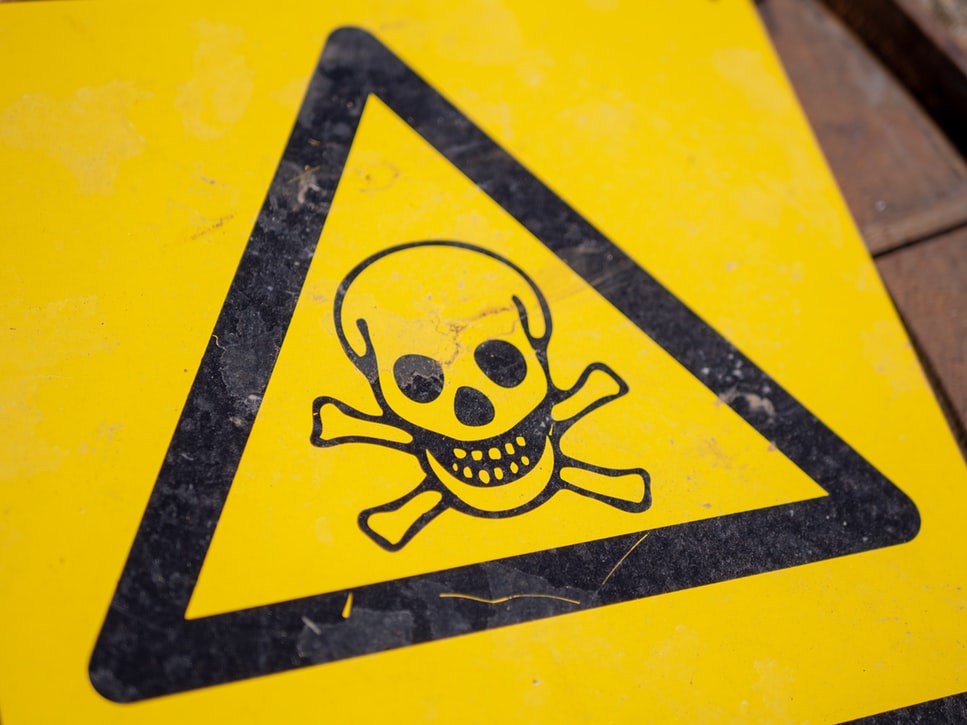Blog
Working with hazardous substances | What employers need to know about COSHH

Depending on your industry, you may have come across the COSHH Regulations in discussion around health and safety. But what exactly do they cover, and what do they mean for your business?
COSHH, short for the Control of Substances Hazardous to Health Regulations 2002, is an important piece of legislation that aims to protect workers from ill health when working with hazardous substances and materials. It was introduced to control employees’ to hazardous substances.
Most businesses use substances or products that are mixtures of substances or have processes that create substances. These may be harmful to peoples’ health and COSHH requires employers to control them in a way that minimises risk.
Breach of COSHH by an employer is a crime, punishable by an unlimited fine.
What does COSHH cover?
The “substances” part of COSHH covers any kind of hazardous material, including liquids, solids, fumes, dust, vapours, fibres, nano-particles, mists, gases and biological agents such as bacteria and viruses. The Chemicals (Hazard Information and Packaging for Supply) Regulations 2009 classify a substance as hazardous if it:
- Is toxic
- Is harmful
- Is corrosive, sensitising or an irritant
- Has a maximum exposure limit
- Has occupational exposure standards
- Is carcinogenic or mutagenic
The “hazardous” part includes damage to lungs, skin, nose, mouth, genes, internal organs, eyes or central nervous system, as well as the risk of injury due to combustion or explosion. Some substances are easily recognisable as hazardous but common substances such as paint, bleach or dust can also cause harm.
COSHH applies to all industries using harmful substances. While many work environments have obvious risks such as woodworking or plastics factories, many more have less apparent risks, such as catering, baking, beauty and hairdressing, cleaning, agriculture, engineering, motor vehicle repair and so on.
The EU’s Classification, Labelling and Packaging of Substances and Mixtures Regulation 2008, known as “the CLP regulation”, requires that all substances and mixtures deemed dangerous to health be identified by a warning label and that suppliers provide a safety data sheet.

What’s not covered by the regulations?
Substances not covered by COSHH include:
- Asbestos;
- Lead and radioactive substances; and
- Explosive and flammable materials.
Employers' duties
Employers must take steps to prevent or control exposure to hazardous substances. In practical terms, this means:
- Identifying potential health hazards via a COSHH risk assessment. This will help you decide how to prevent harm to health.
- Implementing control measures around hazardous substances and ensuring they are maintained.
- Providing employees and others with information, instruction and training around working with hazardous substances.
- Carrying out health surveillance to ensure employees exposed to hazardous substances are monitored for effects to their health.
- Making sure the use of hazardous substances does not exceed the relevant “Workplace Exposure Limit” (WEL). Up-to-date WELs for a variety of substances can be found in the Health and Safety Executive’s publication EH40 workplace exposure limits, which is revised every year.
- Conducting monitoring checks to ensure employees are carrying out tasks as they are supposed to. This includes ensuring all personal protective equipment (PPE) is worn.
- Putting procedures in place to deal with accidents and emergencies relating to hazardous substances.
How do I conduct a COSHH assessment?
If there is potential for inhalation, contact with skin or eyes or ingestion into the body of any classified substance, then those risks to employees’ health must be COSHH assessed.
Start by familiarising yourself with the information sheets for each substance used in your workplace, the HSE’s COSHH guidance notes, the manufacturer’s standards and trade literature.
Focus on the potential hazards and risks from substances in your workplace.
Questions to ask include:
- Is there potential for people to be exposed to substances that might be hazardous to health?
- In what ways are the substances harmful to health?
- What activties, jobs or tasks lead to exposure?
In the first instance, your COSHH assessment should consider how you can prevent exposure at the source. If exposure cannot be prevented altogether, you will need to think about how it can adequately controlled by applying principles of good control practice.
Questions to ask include:
- Could you avoid using a hazardous substance or use a safer process, such as using water-based rather than solvent-based products, or applying by brush rather than spraying?
- Could you substitute a substance or process for something safer, such as swapping an irritant cleaning product for something milder, or using a vacuum cleaner rather than a brush?
- Could you use a safer form, such as using a solid rather than liquid to avoid splashes, or a waxy solid instead of a dry powder to avoid dust?
Control will be adequate when the risk of harm is reduced to as low a level as is “reasonably practicable”. This means:
- All control measures are in good working order.
- Exposures are below the relevant “Workplace Exposure Limit”, where one exists.
- Exposure to substances that cause cancer, asthma or genetic damage is reduced to a minimum.
Where the effects of a substance are irreversible, prevention may be the only cure. Talk to employees, check your trade press, and at trade meetings ask others for ideas.
Meet your health and safety obligations, confidently
Struggling to find the time to keep on top of your health and safety responsibilities? Or just don’t know where to start when it comes to compliance? At WorkNest, we help employers to manage all aspects of health and safety through practical support and sensible, proportionate advice. Our unlimited, fixed-fee service gives you access to a dedicated Health & Safety Consultant, on-site assistance with risk assessments, expert-created document templates, award-winning software and much more.
If you’re not confident in your COSHH abilities, we can:
- Undertake a General Risk Assessment, in which we ask questions relevant to how well you are controlling exposure to harmful substances;
- Evaluate the effectiveness of your risk control measures, whether they be engineered solutions, PPE and/or work practices;
- Sample your COSHH assessments to check that they are suitable; and
- Arrange health surveillance if required.
